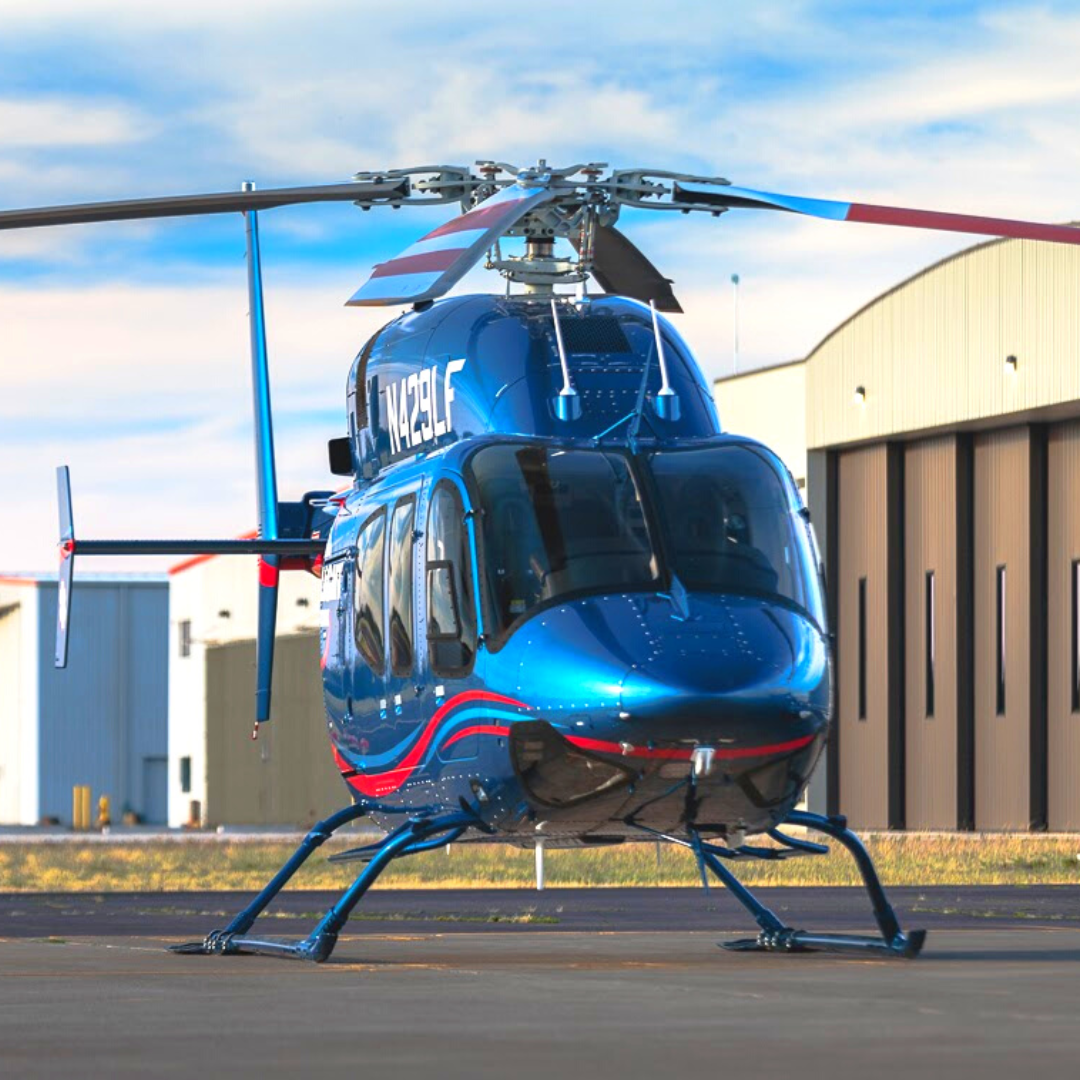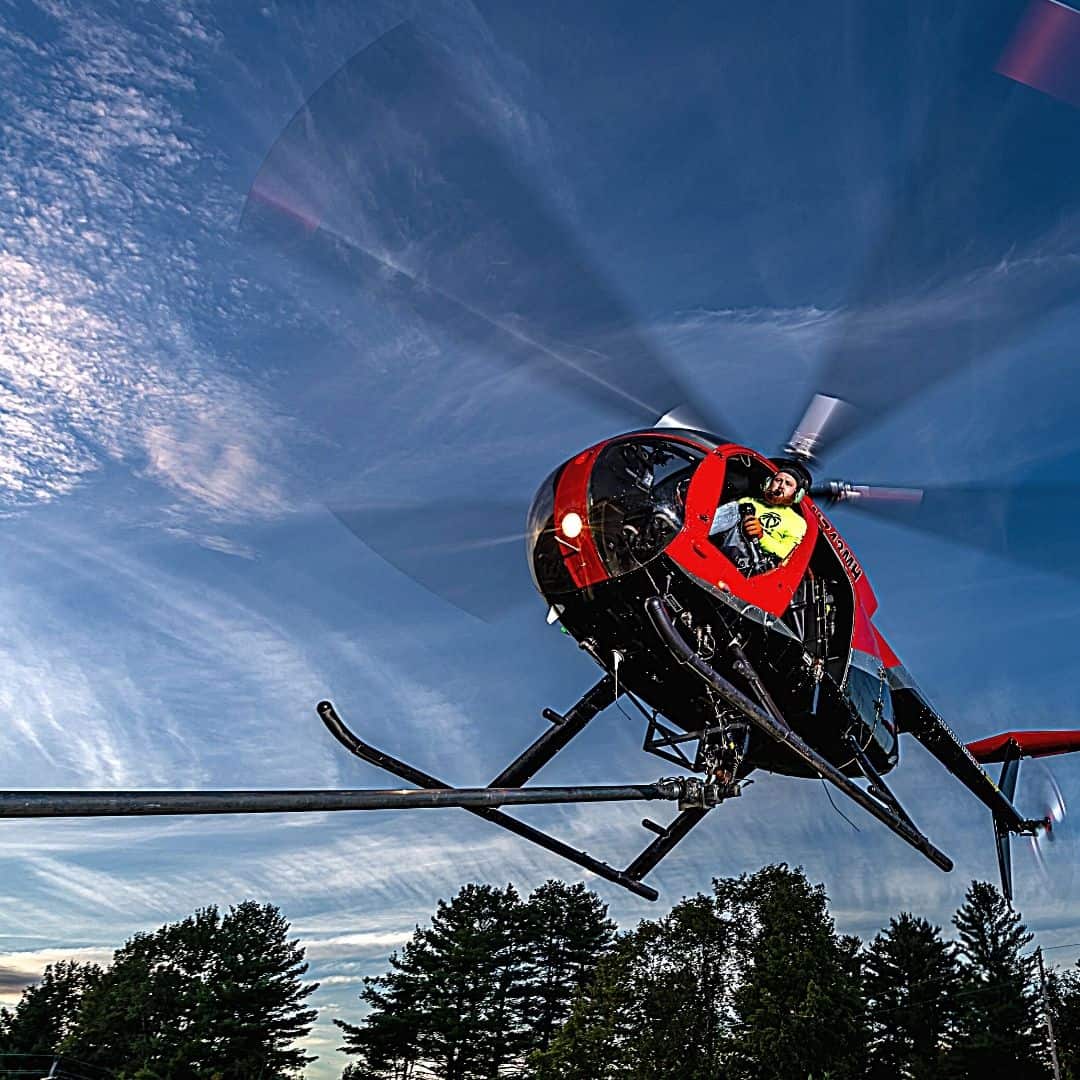by Erik Thresher
Erik Thresher is an FAA Gold Seal Instructor, along with his current position as a full-time Air Ambulance pilot flying the EC-135 and Bell 429, He offers this Blog Post as “Lessons Learned” intended for Flight Instructors but as most Professional Pilots already know, good advice comes when you’re least expecting it, and sometimes it’s even free…
The Rotor Break
Primary instruction in a single-engine helicopter is not for everybody.
By the time you finally take your initial helicopter CFI checkride and are feeling on top of the rotary world, you’ll have likely already woken up from some of the usual nightmares that invade your previously restful nights of sleep. But fear not: what students in the real world will try to pull is far worse, and the learning curve has just started to steepen in what will prove to be, if treated with cautious optimism and a healthy respect for your machine and your student, one of the most challenging and rewarding jobs in your aviation career.
A disclaimer to future helicopter instructors: If you instruct for long enough, you will likely experience the low-rpm warning system blaring while you struggle to regain control of the collective from your student’s death grip. You will likely experience the inevitable “lets-roll-this-ship-right-into-the-hill” tendency of a student learning slope landings. You may find yourself teaching touchdown autorotations in a low-inertia, single-engine helicopter with just enough power to get out of it’s own way, in the winter, with a broken cabin heater, while wondering how you’re going to put gas in the car to get back to tomorrow’s lesson on airspace.
If none of these sound like an interesting challenge or something even remotely enjoyable, there’s always sightseeing tours.
Further, it needs to be stated that not everyone is meant to teach, and not all instructors are good instructors. Regardless of how you feel about that fact, I have met fantastic flight instructors who only see the worst in themselves, and I have seen mediocre flight instructors who admit they aren’t cut out for it. I have had my own share of poor instructors, and I have a long way to go before I would call myself a good teacher, though I will always do my best to keep my students safe.

The student, the instructor, and the aircraft all have limits. And they’re all different.
One of the first things that you will notice when you start teaching is that your students really don’t seem to know what they’re doing. This would seem obvious from the outside, but some instructors find this out the hard way, by allowing a student to push a situation beyond the limits of the instructor, the aircraft, or both. I believe that this is largely due to the fact that even though we have been in the student’s seat for so much time until now, we are now taking on a new role that brings with it different challenges, and we become so focused on that new role that we quickly forget the perspective of the student seated next to us. One interesting part of this process is that while the aircraft’s published limits will not change, your limits as an instructor will change, and your students’ will too. Some new (and old) pilots enjoy showing off their insane pilot skills by pushing these limits, and telling stories about those skills and close calls, with the belief that it will impress others. To the professional aviator, much of it seems careless and needlessly risky, and such stories and behavior won’t impress them. After all, it’s safe to say that if you chose to fly helicopters for a living then you are probably hard to impress (why didn’t you just fly airplanes?!).
You have three priorities as a flight instructor. Their order is absolute, it is unforgiving, and it is written in blood.
- Keep the people safe.
- Keep the aircraft safe.
- (optional) Get the job done.
If you sacrifice an item higher on the list for an item lower on the list, your priorities have been severely f$@%*d up and you need to reevaluate, or take some time off, or find a different line of work altogether. When you choose to leave the surface of the earth, you are making a bond with everyone on board the aircraft, with the machine itself, and with everybody in the air and on the ground below you. This fact is NOT to be taken lightly, although it all too often, is.


Risk aversion is an inverted bell curve.
New instructors often begin their careers heavily guarding the controls, and taking back control of the aircraft at the first sign a student is struggling. They are nervous, a little bit intimidated by the task ahead of them, and not quite confident they have mastery of the aircraft. All of these traits are expected, beneficial, and necessary for a new instructor to possess.
Then as time goes on, the instructor gets more confident, more comfortable, and begins to lower their guard. The level of risk aversion decreases, not always out of fearlessness, but usually from an overconfidence in their ability or in the helicopter’s capabilities. Unfortunately, this inevitably leads to a “scare”, a catalyzing event that shakes them out of the daze they’ve worked themselves into, and if they were lucky and managed the risk just barely well enough, nobody was hurt and the aircraft is undamaged.
This leads to the other side of that inverted bell curve, during the time following one or more “scares”, that their ability to detect risky situations, and the judgment required to avoid them, begins to ratchet back upwards towards a safe level that will allow them to continue teaching and flying for years to come. For some, this bell curve takes place over a few months. For most, this takes years.
Now, this is an oversimplified version of the “evolution of a CFI” that many of us are familiar with, but the underlying message remains the same: Your ability to detect and mitigate risk can and must change over time. The aircraft cockpit is a dynamic and rapidly-changing environment. This fact alone leads to another lesson learned…


10%
Everyone, and I mean everyone, gets at least 10% dumber when they are in or around a running aircraft.
If you don’t believe me, it’s because you’re unwilling to admit it (probably because you’re still working down in that 90% mental acuity level from that last flight). The cockpit is a stressful environment. There is nothing natural about a human being hopping in an R22 and soaring the skies.
It’s loud. It shakes. It’s windy (especially if the doors are off!). We’re learning autorotations and seeing the world from a perspective we’ve never imagined. There’s 2 very different (and sometimes competing) personalities sitting shoulder-to-shoulder, strapped into seats that are levitating 500 feet off the ground, being propelled by a screaming gasoline engine that needs carburetor heat in the summertime.
During flight, and even during preflight as you inspect your aircraft, your mind and body are competing with your muscle memory and split-second decision-making ability in an effort to protect yourself. You are experiencing levels of stress you may not outwardly perceive, but the hormones are flowing and the brain chemistry is changing. This largely won’t change no matter how many years you fly. The act of flying changes you, inside and out.
All this isn’t to say that we become complete idiots the moment we touch the controls, but I have seen people (myself included) do things their rational self wouldn’t dream of doing if they were sitting in an office telling the story to someone else. This is one of the many reasons the FOI’s (Fundamentals of Instruction) stress the “it can’t happen to me” hazardous attitude. It happens to people, and none of those people woke up knowing it would happen to them. The truth is that if we understand and recognize, that we will be mentally operating “below capacity”, we can be primed and ready to recognize when we are about to do something stupid.
An entire article could be written on “external pressures” to fly, but for now, it will suffice to understand that those external pressures also contribute to making us at least 10% dumber (sometimes more) in our decision-making as we attempt to find ways to complete a flight. We are our own worst enemies up in the sky, but recognizing that fact can go a long way towards combating it.
It’s never too late to land, until it is.
Given the ability for these machines to land just about anywhere, it’s always difficult when we read stories about helicopter pilots encountering VFR-into-IMC, or IIMC (Inadvertent IMC). Years ago, HAI (Helicopter Association International) rolled out a program aptly named “Land The Damn Helicopter”.
There have been times in my career, teaching or otherwise, where I should have done just that. And I am fortunate but mostly lucky, to be here telling you that now.
The go, no-go decision is not a single choice before pulling pitch. It is a continuum, a free-flowing process that never stops before and during a flight as the environment changes, mechanical conditions arise, and people in the helicopter begin to feel the effects of the flight. During my early years of teaching and commercial work, I once landed in a muddy field, chasing the sun at dusk, after attempting to scud-run underneath deteriorating ceilings and visibility with a classic case of “get-home-itis”, after a long day of sightseeing rides at a local festival. When I called my boss to admit it, I was expecting the congratulatory “Nice choice deciding to land, glad you’re okay!”. It wasn’t the response I received. In fact, it took me months to appreciate and understand his response, which was “Why did you let it get that far before you landed?”. He was fully aware of the conditions I had attempted to navigate, and he was rightfully disappointed I had tried to make it as far as I did. I had a dozen more chances before that to land, and a dozen more chances before that to have never taken off. And I passed on all of them, until I was barely lucky enough to hike out of that field in the dark, waiting on my boss to pick me up in his truck.
The NTSB database is a tremendous resource that is largely under-utilized by the flight training community, and it is filled with stories of pilots who neglected to land when they had the chance. Every instructor should be well-versed in recent aviation accidents, especially in ones related to their airframe. There is a saying that comes to mind, though I admit I can’t remember which old-timer gifted it to me long ago:
“Every pilot will make his last flight someday. Some will know it, and some will not.”
Sometimes, the best way to get back home to your family, is to land the damn helicopter and walk.


Flight Instruction is not a time-building job.
It is too often taught as a longstanding fact as students progress through their initial ratings towards the coveted CFI certificate that it is “a great way to build time”, and this, unfortunately, contributes to a hazardous and detrimental learning environment for both the student and instructor.
You may build time as an instructor. How much time depends on the structure and customer volume of your respective flight school. But your primary purpose for climbing into the cockpit with your student cannot be to simply rack up the hours. Your primary purpose as a flight instructor isn’t even to teach.
Your primary purpose and duty as a primary flight instructor is to provide a safe environment for your students to learn.
Maintaining safety of flight should be at the forefront of your mind before, during and after each flight. Each flight begins the moment you wake up in the morning, continues to develop on the drive to the airport, fully matures during flight, and doesn’t end upon pulling the mixture knob. The post-flight walkaround, debrief with the student, the mental debrief during the drive home as you come down from your “pilot’s high” brought about by operating such a marvelous flying machine are all part of the flight, and as you lay awake in bed thinking about the lessons learned that day, your flight continues…
You have a tremendous responsibility as an instructor. The habits and attitudes you instill upon your students will stay with them forever. They will not remember everything you said, or every textbook maneuver you demonstrated, but they will remember the times you raised your voice, the times you seemed nervous, all those times you so smoothly regained control of the aircraft after they got it spinning in a hover. They will remember how you made them feel about flying because how you feel about flying will be as clear as day to them, based on the words and body language that you use.
Many pilots say that you learn more being an instructor than you do during all of your primary training. This is certainly true, if as an instructor you are willing to become the student. If you are open to learning and attentive during each moment you spend with your students, it will amaze you, who you can learn from, and what lessons they can bring to the table. I once had a student yell at me, during an autorotation, “If you would quit telling me to do it for a second maybe I can actually do it!!”. It was my first encounter with the lesson that sometimes, “less is more”.
Further, if you are honest with your students and yourself about your mistakes, and allow the job to keep you humble, the cockpit can be a place of personal and professional growth. The bonds between students and instructors, built on trust and fueled by a shared passion for furthering our understanding of our fantastic flying machines, can and do last a lifetime.
A professional aviator is a student for life.


Erik Thresher is an active FAA Gold Seal Flight Instructor, and a full-time air ambulance pilot in North Carolina flying the EC-135 and Bell 429 aircraft. He has operated piston and turbine helicopters in a variety of environments from the Gulf of Mexico to New York City.
In 2016, Erik was named Honor Roll Flight Instructor by AOPA’s Flight Training Awards.
Author: Erik Thresher
FAA Gold Seal Instructor, Air-Ambulance Helicopter Pilot




